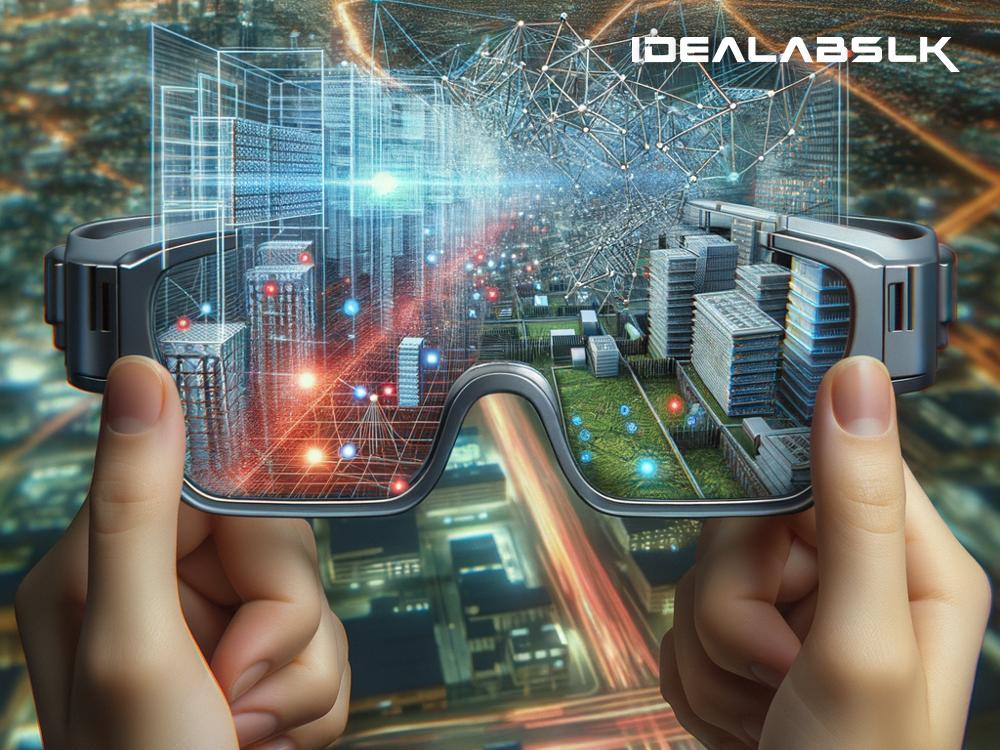How Edge Computing Powers Up Augmented Reality: A Simple Guide
In today’s fast-paced technological world, augmented reality (AR) and edge computing are two buzzwords that often crop up. But when combined, they create a powerhouse duo that's transforming how we interact with digital information in the real world. In this article, we're diving into the basics of how edge computing works in augmented reality, all explained in simple English. So, buckle up!
What is Augmented Reality?
Imagine you’re looking through your phone’s camera, and on top of the real world, you see digital information or objects. That’s augmented reality (AR) - a technology that superimposes computer-generated images on our view of the real world, providing a composite view. AR can add graphics, sounds, and even smell to the world as it exists. From trying on glasses virtually to fixing complex machinery with guided instructions right before your eyes, AR is making heads turn across industries.
And What Exactly is Edge Computing?
Now, let’s talk about edge computing. Think of the internet as a city and data as its citizens. Traditionally, all data would travel to a central location (like a city center) for processing—this is how cloud computing operates. However, as you can imagine, during peak times, this could cause congestion, leading to delays. Edge computing, on the other hand, processes data at the 'edge' of the network - closer to where it's collected. This reduces travel time for data, making processes faster and more efficient. It’s like having mini processing centers in every neighborhood, reducing traffic to the city center.
The Combo: When AR Meets Edge Computing
Augmented reality relies heavily on speed and efficiency. For AR to function seamlessly, it needs to quickly process vast amounts of data in real-time. This is where edge computing shines, by processing data closer to where it’s being collected, it drastically reduces latency (the delay before a transfer of data begins following an instruction for its transfer). In simpler terms, it makes AR interactions almost instantaneous and more reliable.
How Does This Work in Real Life?
Let’s break this down with an example. Imagine you’re using an AR app on your smartphone to find your way through a crowded street festival. The app overlays arrows and signs onto your real-world view, guiding you to your favorite stall. For this to work flawlessly, the app needs:
-
Real-Time Data Processing: Information about your location and the festival layout needs to be processed instantly to guide you correctly.
-
Low Latency: Any delay can lead you the wrong way or cause the digital images to not align properly with the real world.
Edge computing steps in to take care of both these needs. By processing the data locally or very close to where you are, it ensures that the digital arrows and signs match up perfectly with the real-world environment in real-time, making your experience smooth and enjoyable.
The Benefits of Edge Computing in AR
-
Speed: Instantaneous data processing is key in AR for real-time interactions, and edge computing delivers just that.
-
Bandwidth Savings: By processing data locally, only relevant information needs to be sent back and forth, reducing the demand on network bandwidth.
-
Reliability: With data being processed closer to the source, AR applications become less dependent on constant internet connectivity, making them more reliable especially in areas with poor network coverage.
The Future of AR and Edge Computing
The marriage between AR and edge computing holds a promising future. As more devices become connected and smart, the need for real-time, reliable augmented experiences grows. This collaboration not only enhances user experience by making augmented reality more immersive and responsive but also opens new doors for industries like healthcare, education, and entertainment, among others.
For instance, imagine a future where surgeons use AR glasses powered by edge computing to see real-time vital stats and 3D models during procedures, or mechanics fixing complex machinery with overlay instructions fitting exactly to the parts they’re viewing, all enabled by the power of edge computing.
Wrapping Up
In the grand scheme of things, the combo of edge computing and augmented reality is like peanut butter and jelly - great on their own but even better together. By bringing data processing closer to where it’s needed, edge computing unlocks the full potential of AR, making digital interactions with our real world smoother, faster, and more intuitive than ever before. As we step into future, the possibilities are only limited by our imagination. Welcome to the edge of tomorrow, where reality meets augmentation seamlessly!

